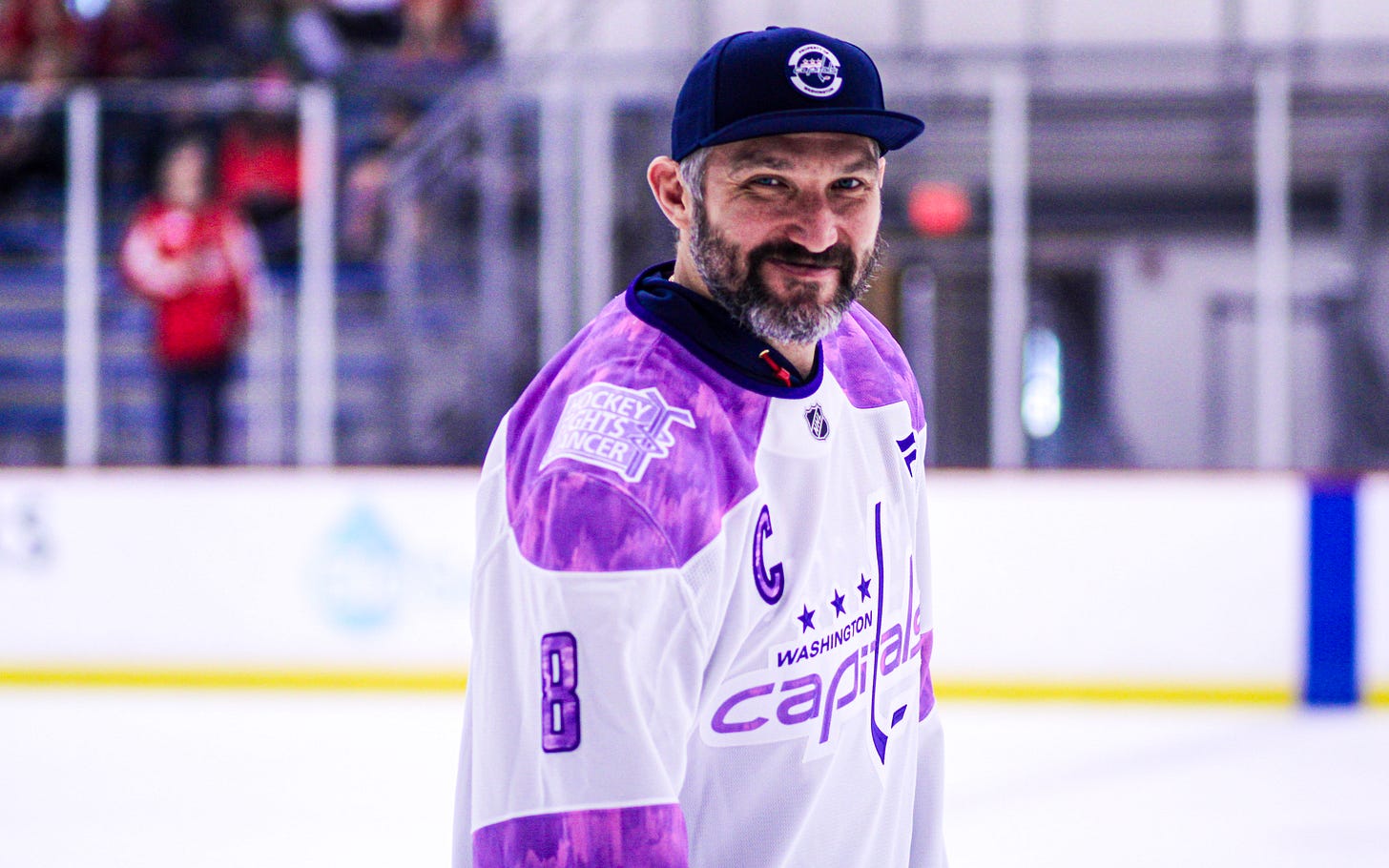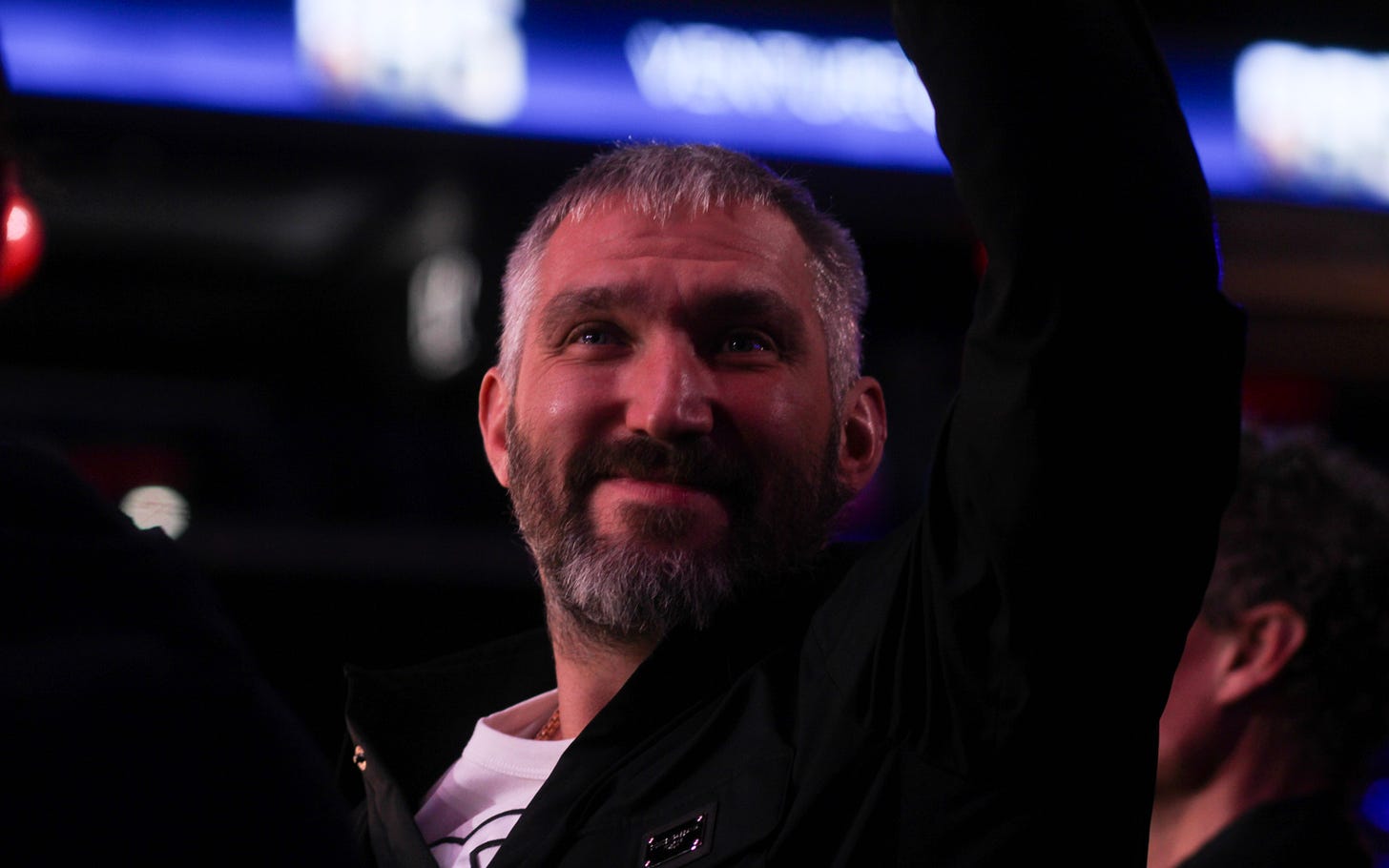Understanding The Full Impact Of The Ovechkin Effect, And How A Rare Star Turned D.C. Into A Hockey Town
Alex Ovechkin didn't just change the Washington Capitals; he changed the game as a whole in the D.C. Metropolitan Area.
It’s rare that you find a star that’s in it for the long haul. That celebrates every win with the most enthusiasm and grieves every loss. That completely turns around a franchise. Then a city. Then an entire region. And back home, an entire country, all while making league-wide history and completely transforming a sport.
Enter Alex Ovechkin.
Tom Wilson and his Washington Capitals teammates will all tell you: “There’s no one like O.”
And there isn’t. He doesn’t just love to score goals (though he’s assured me that it’s up there with the best feelings in the world, something you can’t really put into words); he loves hockey. Lives and breathes it. Completely embodies it.
And it’s not just for himself or his individual success. It’s for his wife and kids, his mom and dad, his family, his friends, his fans. And, most importantly, for the beautiful game, and for the city of Washington, which he calls his “one love.”
A handful of fans who were Ovechkin’s neighbors in his earlier days remember him training vigorously with the garage open, or running uphill or pushing himself relentlessly in training. They also remember a fun-loving kid who was a positive member of the community.
That’s what this article is about. His love for the city, for the District, his “second home.”
"I don’t know if this sounds, like, stupid, but this is my second home," Ovechkin smiled. "I grow up, like I spend 20 years here. I grew up like a man... like, I grew up here, you know?"
He doesn’t just love scoring goals; he loves hockey as a whole, and his career hasn’t just been for himself or his family. It’s for the beautiful game, for the city of Washington, which he calls his “one love.”
Ovechkin made his NHL debut almost 20 years ago, on Oct. 5, 2005. Since then, over two decades and counting, he’s helped ring in a new era in D.C., bringing hockey to life and sparking an influence over the area known to this day as the “Ovechkin Effect.”
Since Ovechkin’s rookie season, there are more than 20,000 hockey players and 12,000 youth hockey players registered in the Potomac Valley, an increase of 71 and 43 percent, respectively, in those two categories. It marks the first time the DMV has seen those numbers in hockey.
After all, everyone wanted to be like “Ovi,” from young kids watching on the TV at home to adults who’d never been on skates before.
It’s why in Maryland, Cabin John Ice Rink — which still has a growth chart featuring a young Ovechkin front and center — Rockville Ice Arena, the Gardens Ice House and Wheaton Ice Arena, among so many other rinks in the area, are filled to the brim, their hockey instruction courses andleagues seeing high enrollment and the Montgomery Ice Devils expanding as one of the best youth organizations in the region.
All the while, Fort Dupont Ice Arena in D.C. is undergoing renovations to continue to bring the sport to minority youth players in the District. MedStar Capitals Iceplex, the team’s practice facility in Arlington, Virginia, is also busy on a daily basis; youth players are on the ice in early mornings for on-ice instruction, then pressed up against the glass to watch the Capitals practice, hoping one day to be like them, before 18+ players take the ice for some afternoon pickup ahead of late night beer league.
It’s not just the ice rinks, though. More and more people wanted to play hockey year-round. That’s where Ovechkin and the Capitals stepped in.
Washington has helped build and renovate 14 different rinks across the area in response to the ever-growing demand for the sport, and the team launched its “Learn To Play” program in 2016, which has introduced over 9,000 players to the game since. The team’s “Hockey School” program has also made the game accessible to over 1 million students across at least 1,500 D.C. schools, with 66,826 sticks, 2,992 nets, 44,240 balls and 12,568 pucks being donated.
Beyond spreading the game throughout different parts of the DMV, Ovechkin has also worked to make sure that all players are welcome to the rink.
He’s been working closely with the American Special Hockey Association for over 20 years, making sure that over 150 special hockey teams don’t have to pay for ice time and can learn the game and love it as much as he does. All the while, the game’s grown among female players, with the team launching the “ALL CAPS ALL HER” program while more women and girls — including this reporter — are picking up hockey sticks.
Which brings me to a personal note: without Ovechkin, I wouldn’t be here. It’s a bold statement, but a true one. I grew up introverted and unsure of myself, until I went to a Capitals game against the St. Louis Blues in 2008. There, Ovechkin scored, and from there, life was all about hockey.
I wanted to be like him: confident, accomplished, fun-loving, strong, dedicated, driven. I grew up watching his every shift, pretending to be him in “mini-stick” competitions in the living room, hanging his FatHead on my wall. And ultimately, it inspired me to pursue a career in hockey reporting, even though I was advised that it was too competitive a field and that I’d never make it.
Years later, I’d be sitting next to Ovechkin in his stall, talking about scoring goals, his love for the game, his family and what life means to him. As Wilson mentioned to me in passing last season: “Look at you now, thriving.” Because, wow, life takes you places.
As we start to see the end of the Alex Ovechkin era, it’s important to remember what he’s done beyond the goals record, beyond the points and beyond bringing the city its first Stanley Cup.
He’s transformed hockey as a whole in the Nation’s Capital.




